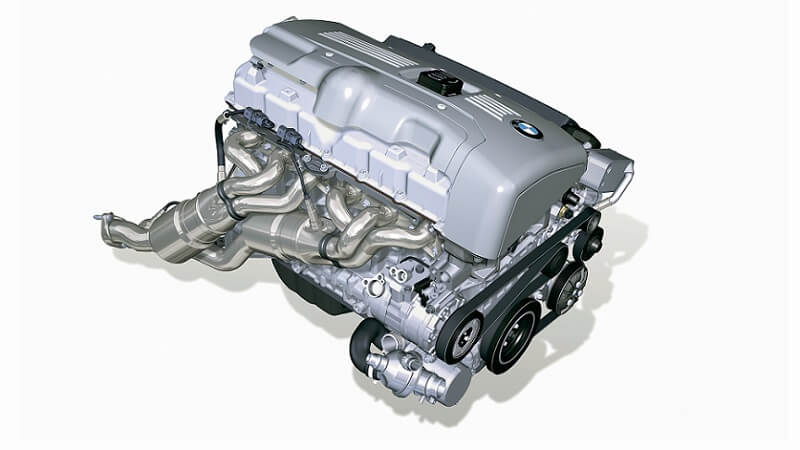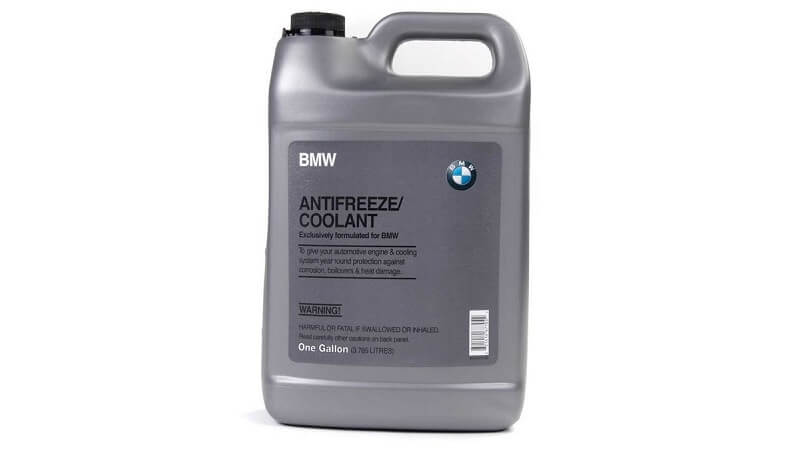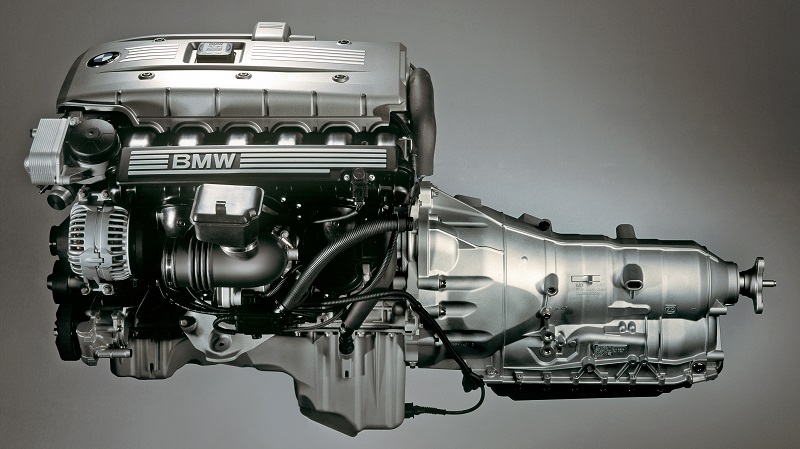The N52 succeeded the highly-successful M54 and powered multiple BMW cars between 2004 and 2015. While it became one of the most reliable and popular inline-six engines BMW ever made, it had a lesser-known sibling called the N51.
Interestingly, the N51 is near-identical to the N52, powering the same cars and available during the same period. So why did BMW produce two iterations of the same engine?

Photo credit: autowp.ru
BMW N51: A Brief History
Before we look at the N51, let’s brush up on the N52 it’s derived from. The N52 was the first water-cooled BMW engine to use an aluminum and magnesium construction for the engine block.
It debuted on the BMW E90 3-Series and E63 6 Series and would eventually retire as the last naturally-aspirated engine that BMW manufactured. It was listed as one of Ward’s 10 Best Engines in 2006 and 2007.
The N51, on the other hand, is a slightly modified version of the engine that BMW sold in parts of the U.S. that enforced SULEV regulations. We’ll take a detailed look at what this means further below.
BMW N51 VS N52
The N51 and N52 are essentially the same engines, and it’s almost impossible to tell the differences visually. The easiest way to know what engine your car is equipped with is to check the emissions label under the hood.
The N51 will say “SULEV”, while the N52 will have “ULEV”. Another way to tell the difference is to check the radiator. The N51’s unit came with an EAC (Environmental Air Catalyst) Sensor attached to the radiator fins. This small device monitors the working of the radiator.
There are a couple of mechanical differences between the two engines. The N51 featured a three-stage variable-length intake manifold instead of one, with a lower compression ratio from 10.7:1 to 10.0:1. The two engines also have different cylinder heads as BMW made changes to the combustion chamber. Likewise, the cylinder head cover and crankcase ventilation systems differ.
What’s worth noting is that BMW tuned both engine versions to produce similar output figures.
What Is a SULEV Engine?

Photo credit: autowp.ru
SULEV, or Super Ultra Low Emissions Vehicle, is an emission classification initially introduced under the California Air Resources Board (CARB). California legislation demands that a certain percentage of vehicles sold by a manufacturer must comply with SULEV regulations, and that’s how the N51 and specific other less-polluting engines came about.
While tested under an FTP-75 cycle, a series of emission tests to simulate city driving over an extended period, a ULEV-compliant engine emits under 2.1g/mi of CO (carbon monoxide) and 0.07g/mi of NOx (nitrogen oxides).
On the other hand, a SULEV-compliant engine will produce less than 1.0g/mi of CO and 0.02g/mi of NOx. These values are of an engine that has covered 120,000 miles or is 11 years old. In general, a SULEV engine is considered 90% cleaner than its average counterpart.
Which States Are the N51 BMWs Sold In?
The LEV II Standards include LEV (Low Emissions Vehicle), ULEV (Ultra Low Emissions Vehicle), SULEV (Super Ultra Low Emissions Vehicle), and PZEV (Partial Zero Emission Vehicle), which have since been adopted by other states. These include Arizona, Connecticut, Maine, Maryland, Massachusetts, New Jersey, New Mexico, New York, Oregon, Pennsylvania, Rhode Island, Vermont, Washington state, and Washington D.C.
If your E9x 3-Series, or one of the other Bimmers typically powered by an N52 engine, was purchased in one of these states, it likely houses the N51.
As mentioned earlier the BMW N52 engine falls under the ULEV class.
What Are The Most Common BMW N51 Engine Problems?
The N51 is a largely reliable engine. However, it did feature some additional components to adhere to the stricter emission norms. In addition to the problems caused by these parts, the N51 also suffered the same troubles as its N52 counterpart.
EAC Sensor
As mentioned above, the EAC Sensor is a small device that works alongside the radiator. It plays a vital role in emission tests, and your car will not pass a smog test if your EAC Sensor has failed. Unfortunately, the sensor is hard-wired to the radiator, and you’ll very likely have to replace the entire unit in case of failure.
Water Pump Failure
The N51/N52 introduced an electric water pump instead of a mechanical unit. While the use of electric water pumps had its own perks, this was one of BMW’s first uses of this new technology As expected, not everything went smoothly. They were built rather poorly, and there have been numerous reports of them cracking as early as after 40,000 miles.
As far as warning signs go, you won’t get too many of them before the water pump fails. Look for higher than normal operating temperatures, a radiator fan that works more than usual, and make sure to check your coolant regularly. A sudden drop of coolant level in the expansion tank is a tell-tale sign that your water pump is about to go.
Thermostat Failure
A thermostat failure can often be misdiagnosed as a water pump failure as the two work together to regulate engine temperatures. A thermostat’s job is to control the coolant circulating to the engine. To prevent the engine from overheating, it forces hot engine coolant into the radiator to be cooled off. After this, the water pump sends the now-cooler coolant back to the engine.
If the thermostat fails, the flow of the engine to the radiator stops, which can result in the engine overheating very quickly. Running your engine at high temperatures constantly can cause damage and force internal parts to wear out much quicker.
Apart from overheating, check if your engine takes a long time to reach normal running temperatures on a cold start. A coolant leak can also be a sign of a failed thermostat.
VANOS Failure
Like the N52, the N51 features BMW’s variable valve timing system for the intake and exhaust valves, also called double VANOS. The technology comprises solenoids that control oil flow to the actuators that move the cam gears, thus opening and closing the valves.
Every time you drive your car, the VANOS solenoids are online and working. Since they’re always engaged, VANOS solenoids are open to wear and ultimately failure. If this happens, your engine should still run, but with a noticeable drop in power, along with other symptoms like a rough idle.
They usually tend to last for over 70,000 miles, but we recommended replacing them regularly to avoid unexpected drops in engine performance.
Hydraulic Valve Lifters
On higher-mileage N51 engines, the hydraulically adjusted valve lifters may be worn out. There are numerous cases of owners complaining about a ticking noise coming from the engine compartment. As it turns out, worn-out valve lifters are the most common culprit. Lifter noise is usually the worst while the engine is cold, and gets better as the car warms up.
A faulty valve lifter doesn’t drastically affect the engine’s performance, but it can become an annoying rattle if left unattended. The ‘tick’ is caused by the lack of oil reaching the lifters. .
Valve Cover Gasket Oil Leaks
A valve cover gasket oil leak is an issue that’s common on multiple BMW engines, and not just the N51. In most cases, it’s caused over extended durations, as the gaskets wear down and crack from the engine heat.
Regular maintenance checks can help avoid this. If you detect the smell of burning oil, an oil leak, or smoke from the valve cover region, it could be because of a worn gasket.
Oil Filter Housing Leak
Another part that can deteriorate over time is the oil filter housing. A gasket seals the oil filter housing to the engine, and there will be an oil leak if it cracks. Attending an oil filter housing leak is crucial as it can cause severe mechanical problems if ignored.
Oil leaking onto the serpentine belt can cause the belt to slip off and send bits of it into the front crank seal and the engine. This can have catastrophic consequences, including permanent engine damage.
Is a BMW N51 More Expensive to Own?

Photo courtesy: autowp.ru
Simply put, yes, a BMW N51 is more expensive to own than an N52 engine. This is because multiple parts required for the engine to produce fewer emissions are more complicated and cost more. There’s also the fact that some of these parts, like the radiator, have to be replaced entirely in case a component fails.
Such is the case with elements like the gas tank as well. Most N51-powered cars come with a hermetically sealed gasoline tank required to reduce vapor emissions. As a result, if a component in the tank fails, you will have to replace the entire unit. As it’s sealed, you can’t access the inside of the tank to repair any individual bits.
Extended Warranty
A silver lining to this is that SULEV vehicles come with a generous 15 years/150,00mile warranty. A BMW’s owner’s manual for the E90 3-Series states that “If any emission-related part on your vehicle is defective, the part will be repaired or replaced by BMW NA.” While there’s no mention of the individual parts that the warranty includes, elements like the fuel tank, radiator, valve cover gaskets, O2 sensors, VANOS, Valvetronic sensors, and essentially the rest of the engine should be covered. There are owners out there who’ve saved many thousands of dollars thanks to the warranty.
On the downside, this is not a warranty that BMW offers and is imposed by the LEV II regulations on manufacturers. As a result, getting your local dealership to adhere to it may be more of a task. Bimmer forums have multiple posts on dealerships utterly unaware of the warranty.
It’s also worth noting that the different states adopted SULEV regulations at other times. For example, Arizona covers only model years 2012 and over.
Should You Buy A BMW N51 Powered Car?
The N51/N52 is an excellent engine. However, the N51 will require deeper pockets to maintain. If you can get your hands on a lower mileage, newer engine that still has some time left on its warranty, you should consider getting it. However, it will be significantly more expensive to maintain once the warranty runs out.




